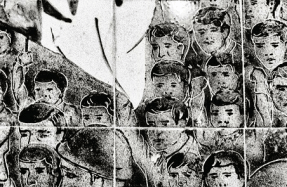The Cult of Walter Pfeiffer

Visiting the photographer Walter Pfeiffer in his studio in Zurich, you find an orderly space, painted white, possessing the trappings of a typical design studio: swivel chairs, Pantone pens, and a white Formica tabletop on trestles. Yet, lining the walls are exquisitely arranged mood boards, wrapping paper, photographs, posters, plastic props, and a Technicolor cornucopia of cascading bolts of cloth. Early in his career, Pfeiffer was a window dresser for a department store, where he learned the skills of arrangement. Today, he still employs this way of working to test environments and themes for commissions, as if he always has the shopwindow in mind.
Now in his early seventies, Pfeiffer has never been in greater demand. His photographs are exhibited and published worldwide, and he continues to work commercially, represented by a leading fashion-image agency, Art + Commerce, which handles the likes of Steven Meisel, Patrick Demarchelier, and Paolo Roversi. Pfeiffer’s style readily connects with the preoccupations of contemporary image makers with whom he is now identified, such as Jack Pierson, Wolfgang Tillmans, and Ryan McGinley. Yet, he emerged in the 1970s with an earlier generation of photographers that included Larry Clark, Duane Michals, and Peter Hujar, who explored the instability of gender and sexuality in relation to the male body. To look at a Pfeiffer photograph, such as the lead at F+F design school, in Zurich, of a bare-chested young man exhaling a curling puff of yellow smoke between cupped hands—like a modern-day satyr performing at a party—is to be reminded that masculinity is now rooted in self-awareness, a kind of disruptive sexualization. This is the legacy of the liberation movements of minority groups who undermined the hegemony of heterosexual masculinity in the 1970s.
You’re reading a preview, subscribe to read more.
Start your free 30 days





